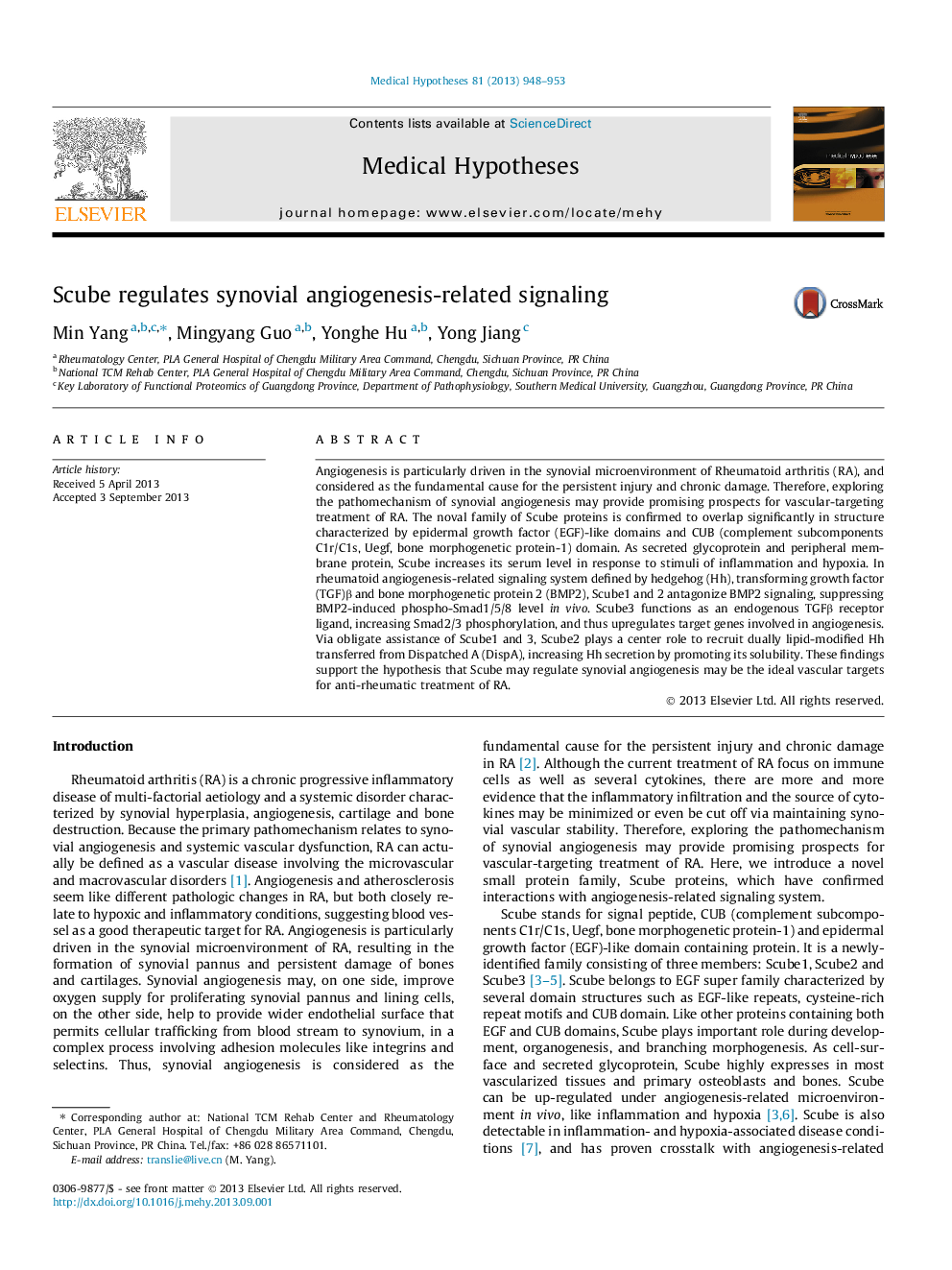| کد مقاله | کد نشریه | سال انتشار | مقاله انگلیسی | نسخه تمام متن |
|---|---|---|---|---|
| 5812213 | 1115029 | 2013 | 6 صفحه PDF | دانلود رایگان |
عنوان انگلیسی مقاله ISI
Scube regulates synovial angiogenesis-related signaling
دانلود مقاله + سفارش ترجمه
دانلود مقاله ISI انگلیسی
رایگان برای ایرانیان
موضوعات مرتبط
علوم زیستی و بیوفناوری
بیوشیمی، ژنتیک و زیست شناسی مولکولی
زیست شناسی تکاملی
پیش نمایش صفحه اول مقاله

چکیده انگلیسی
Angiogenesis is particularly driven in the synovial microenvironment of Rheumatoid arthritis (RA), and considered as the fundamental cause for the persistent injury and chronic damage. Therefore, exploring the pathomechanism of synovial angiogenesis may provide promising prospects for vascular-targeting treatment of RA. The noval family of Scube proteins is confirmed to overlap significantly in structure characterized by epidermal growth factor (EGF)-like domains and CUB (complement subcomponents C1r/C1s, Uegf, bone morphogenetic protein-1) domain. As secreted glycoprotein and peripheral membrane protein, Scube increases its serum level in response to stimuli of inflammation and hypoxia. In rheumatoid angiogenesis-related signaling system defined by hedgehog (Hh), transforming growth factor (TGF)β and bone morphogenetic protein 2 (BMP2), Scube1 and 2 antagonize BMP2 signaling, suppressing BMP2-induced phospho-Smad1/5/8 level in vivo. Scube3 functions as an endogenous TGFβ receptor ligand, increasing Smad2/3 phosphorylation, and thus upregulates target genes involved in angiogenesis. Via obligate assistance of Scube1 and 3, Scube2 plays a center role to recruit dually lipid-modified Hh transferred from Dispatched A (DispA), increasing Hh secretion by promoting its solubility. These findings support the hypothesis that Scube may regulate synovial angiogenesis may be the ideal vascular targets for anti-rheumatic treatment of RA.
ناشر
Database: Elsevier - ScienceDirect (ساینس دایرکت)
Journal: Medical Hypotheses - Volume 81, Issue 5, November 2013, Pages 948-953
Journal: Medical Hypotheses - Volume 81, Issue 5, November 2013, Pages 948-953
نویسندگان
Min Yang, Mingyang Guo, Yonghe Hu, Yong Jiang,